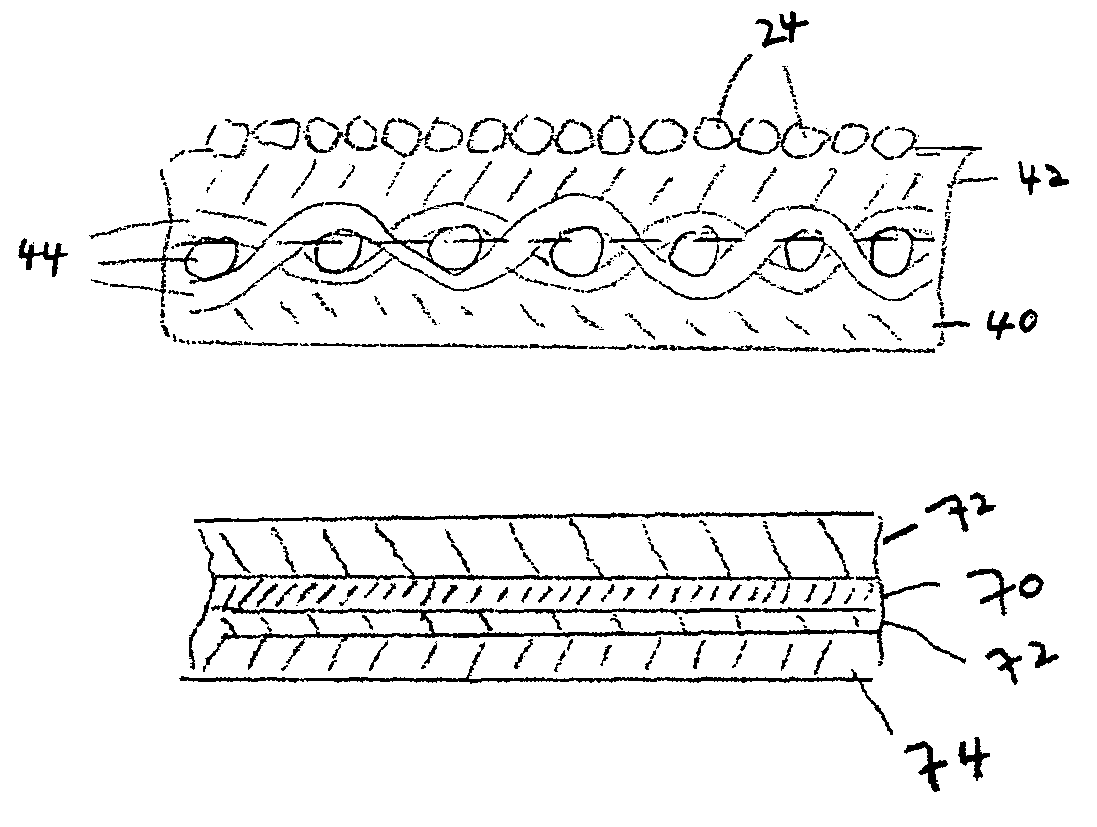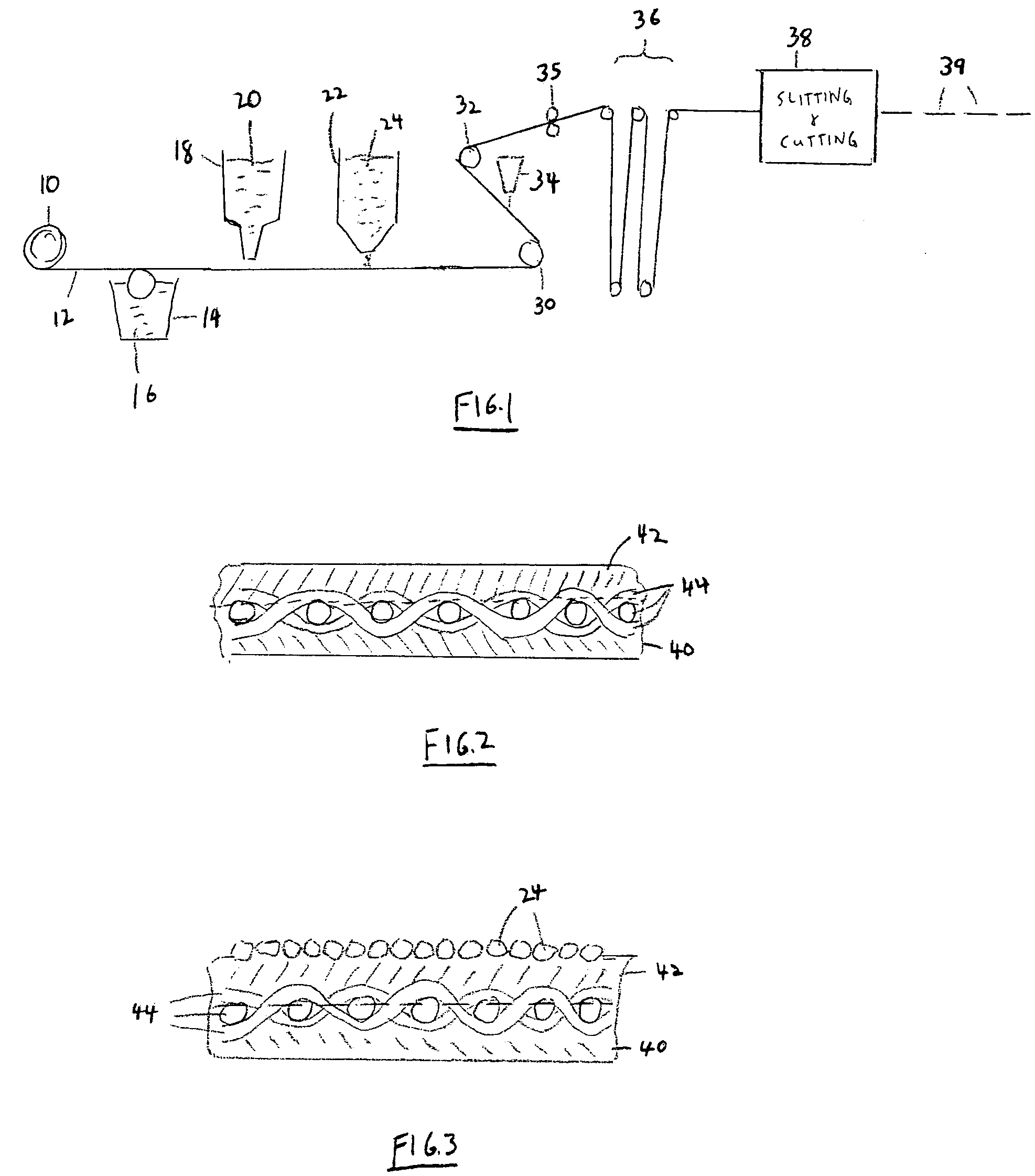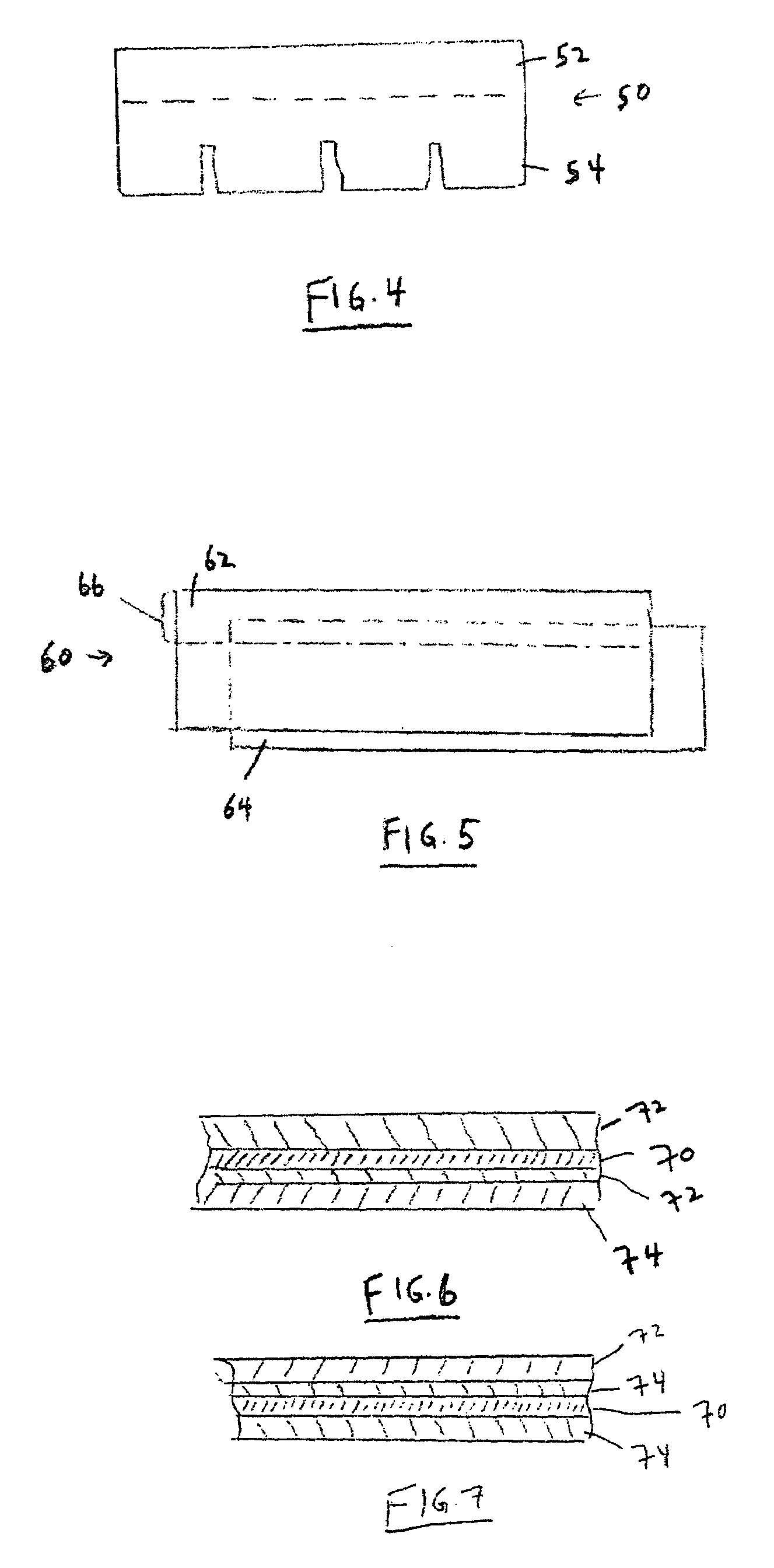Dual layer shingle
a technology of asphalt-based roofing and shingles, which is applied in the direction of record information storage, transportation and packaging, instruments, etc., can solve the problems of limited strength and life of shingles, extremely expensive as compared with ordinary oxidized asphalt, and relatively limited use of modified asphalt in roofing shingles, so as to achieve less costly and easy to apply
- Summary
- Abstract
- Description
- Claims
- Application Information
AI Technical Summary
Benefits of technology
Problems solved by technology
Method used
Image
Examples
Embodiment Construction
[0016]Reference is first made to FIG. 1, which shows a production line for shingles. The production line shown in FIG. 1 is conventional and therefore is described only briefly.
[0017]As shown, the production line includes a roll 10 of fiberglass mat or organic felt (normally the roll 10 will be fiberglass mat). A sheet 12 is unrolled from the roll 10 and passed over a conventional coater 14 containing conventional oxidized asphalt 16. The coater 14 coats the bottom of the sheet 12 with the oxidized asphalt 16.
[0018]The sheet 12 then passes beneath a top coater 18, which coats the top of the sheet 12 with modified asphalt 20. The differences between the modified asphalt 20 and the conventional asphalt 16 will be described below.
[0019]The sheet 12, now coated on both sides, next passes beneath a granule applicator indicated at 22, where granules 24 are applied to the top surface of the sheet 12. The sheet 12 then passes through rollers 30, 32 allowing the bottom surface of the sheet t...
PUM
| Property | Measurement | Unit |
|---|---|---|
| softening point | aaaaa | aaaaa |
| softening point | aaaaa | aaaaa |
| softening point | aaaaa | aaaaa |
Abstract
Description
Claims
Application Information
 Login to View More
Login to View More - R&D
- Intellectual Property
- Life Sciences
- Materials
- Tech Scout
- Unparalleled Data Quality
- Higher Quality Content
- 60% Fewer Hallucinations
Browse by: Latest US Patents, China's latest patents, Technical Efficacy Thesaurus, Application Domain, Technology Topic, Popular Technical Reports.
© 2025 PatSnap. All rights reserved.Legal|Privacy policy|Modern Slavery Act Transparency Statement|Sitemap|About US| Contact US: help@patsnap.com



